We visited the rainforest this morning. It was easy. Panama City has a rainforest right in the city, 3.5 miles from where we are staying – the Metropolitan Natural Park. Helpful tip – if you ever visit a rainforest, don’t forget to bring an umbrella… or rain-gear. Some people are put off when it rains in a rainforest.

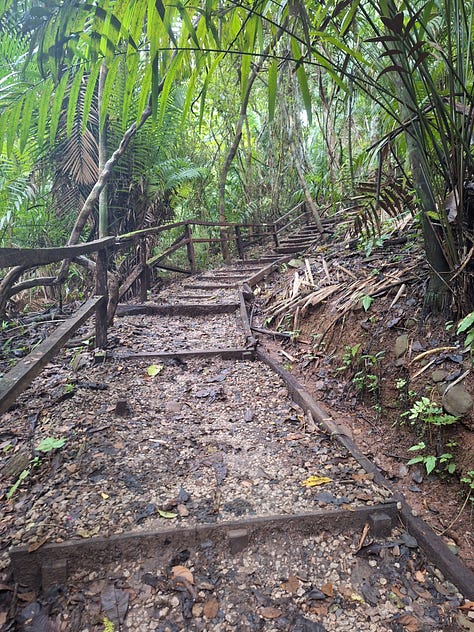
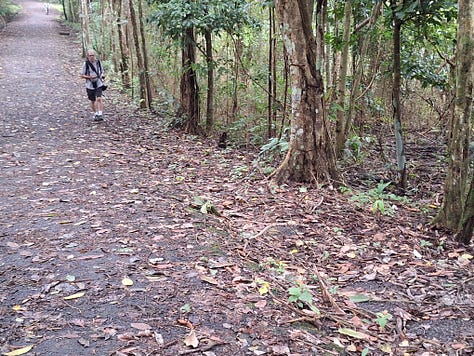
To be clear, we were prepared for rain, and it did lightly rain for 15 minutes. When we commented to a park employee about the rain, he stated, “that’s not rain, that’s humidity.” Sometimes it is so humid, water drips from the trees.
Being in a major metropolitan city, remarkably the park is home to 227 bird species, 45 species of mammals, 36 species of snakes and 14 species of amphibians. For you plant lovers, there are about 284 plant species, including many species of trees, creepers, epiphytes, orchids, and mosses.
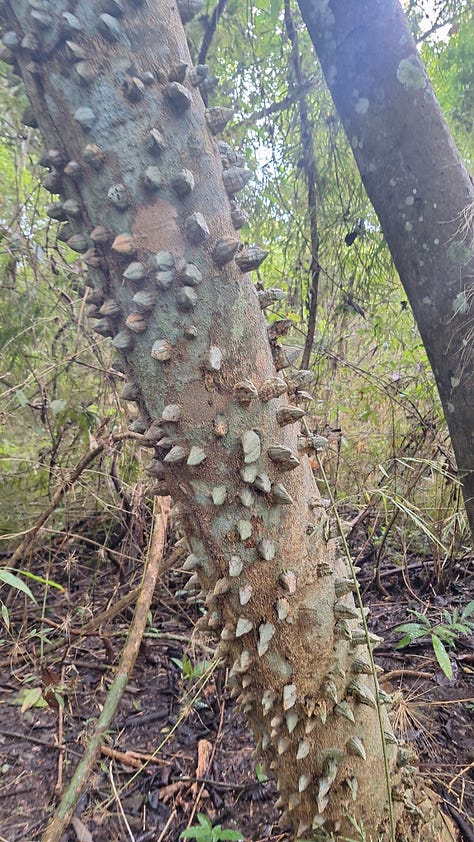
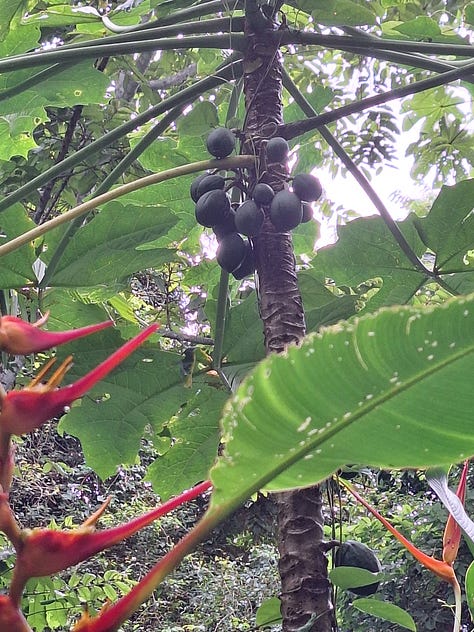
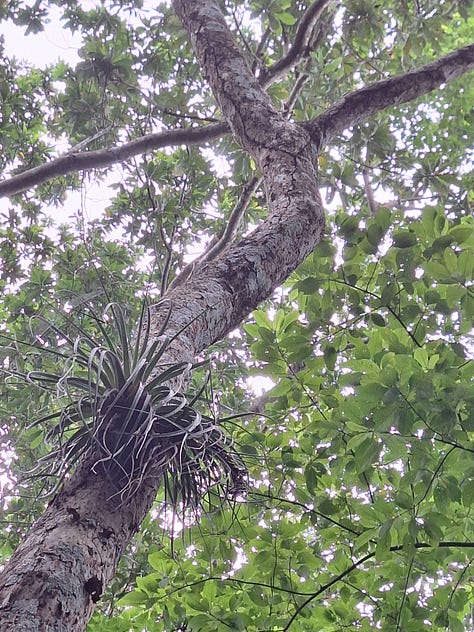
Ruth and I saw over 23 species of birds, a little band of five howling monkey, three brown-throated three-toed sloth, turtles, lizards, a few agouti rodents, a white-tailed deer (surprising), and some cool looking insects and spiders. They have anteaters, but no luck seeing one. Termite nests were everywhere, termites being one of their main food sources.

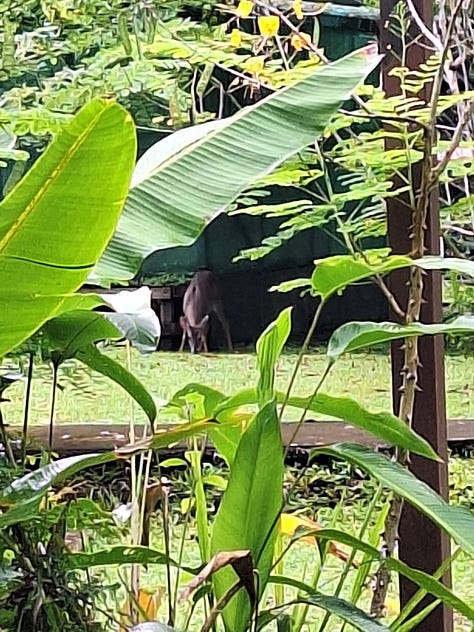
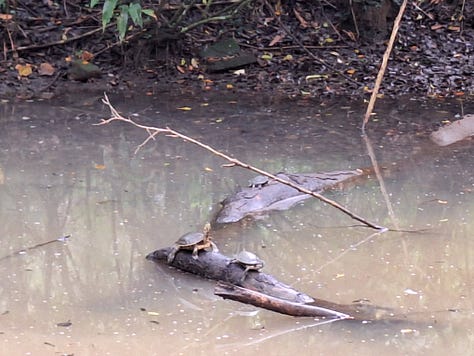
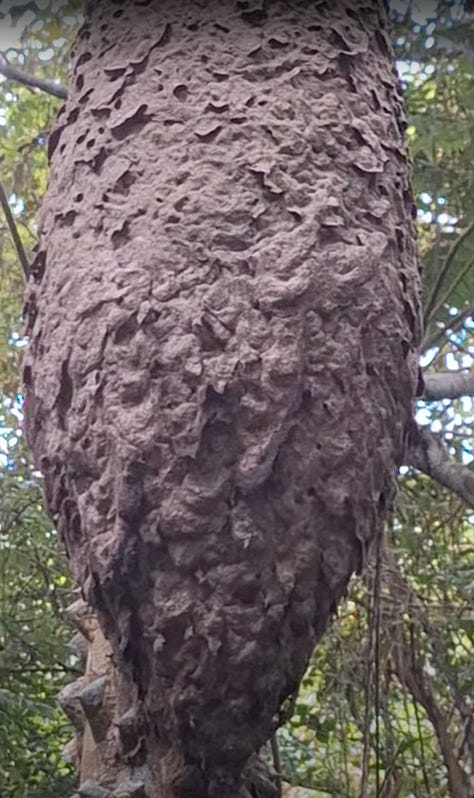
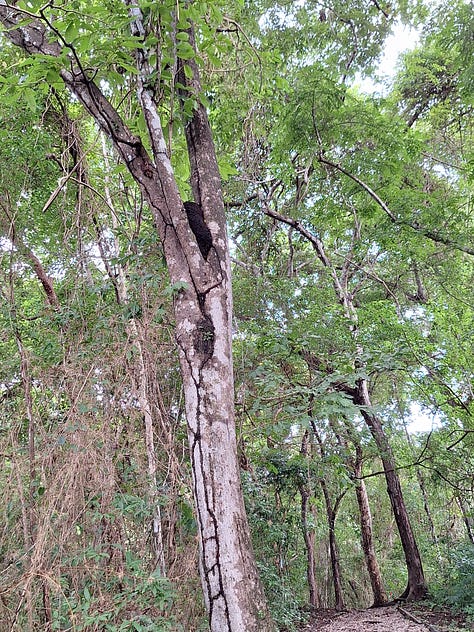
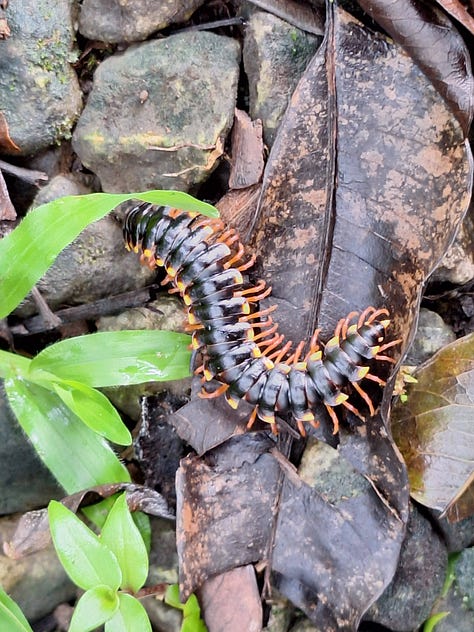
While it was easy to find most of the wildlife, we had dipped on sloths until near the end. (Dip is birding lingo for looking for a specific specie, but not finding it.) Near the end of the morning, we saw a park naturalist who took us 30-40 feet off the trail and pointed out the sleeping sloths. Never would have seen them otherwise.

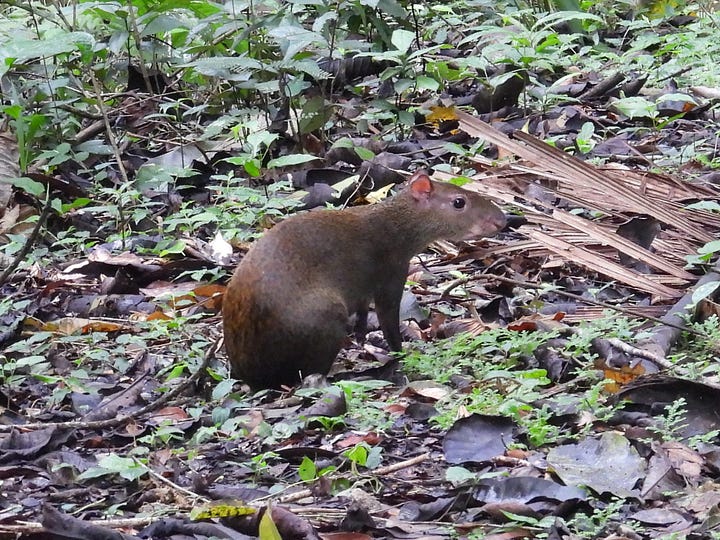

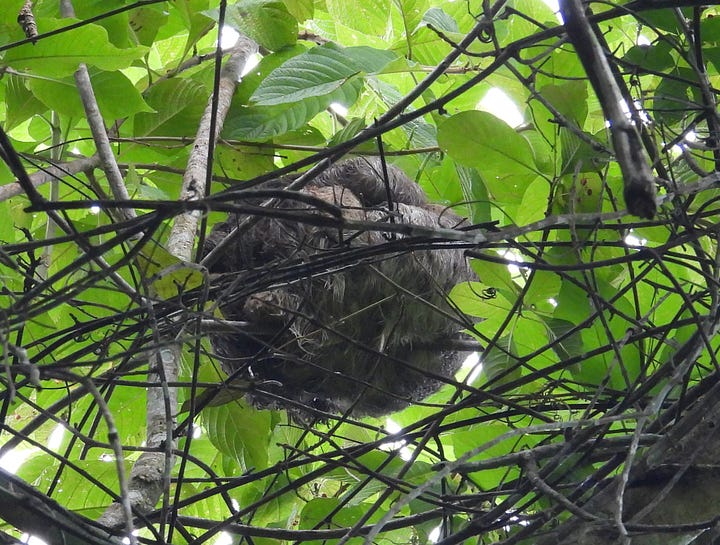
If you ever visit Panama City, Metropolitan Park is a must see visit.
We’ll end with the leaf cutter ants, one of our favs. My back hurts just watching them carry all this stuff.
From the web: The ants, or "fungus farmers," cut and transport leaves to their nests to feed the fungus, which breaks down plant polymers that ants cannot digest, making nutrients available for the ants. This partnership is a complex symbiosis that also involves bacteria to protect the fungal crop from parasitic molds. The ants provide processed plant material and hygiene for the fungus, and the fungus, in turn, becomes the sole food source for the ants. (I love the dude carrying the big, red berry.)
-Robert (& Ruth)



Wow! The visit to the park with you is just more of the overwhelming evidence of the interconnectedness and complexity of life! Thanks for bringing us along :)
It is so wonderful to be able to see and hear all that you are doing! Love these very educational and incredible photography in your updates! Feels like we are there with you!! Keep it coming😘🤗